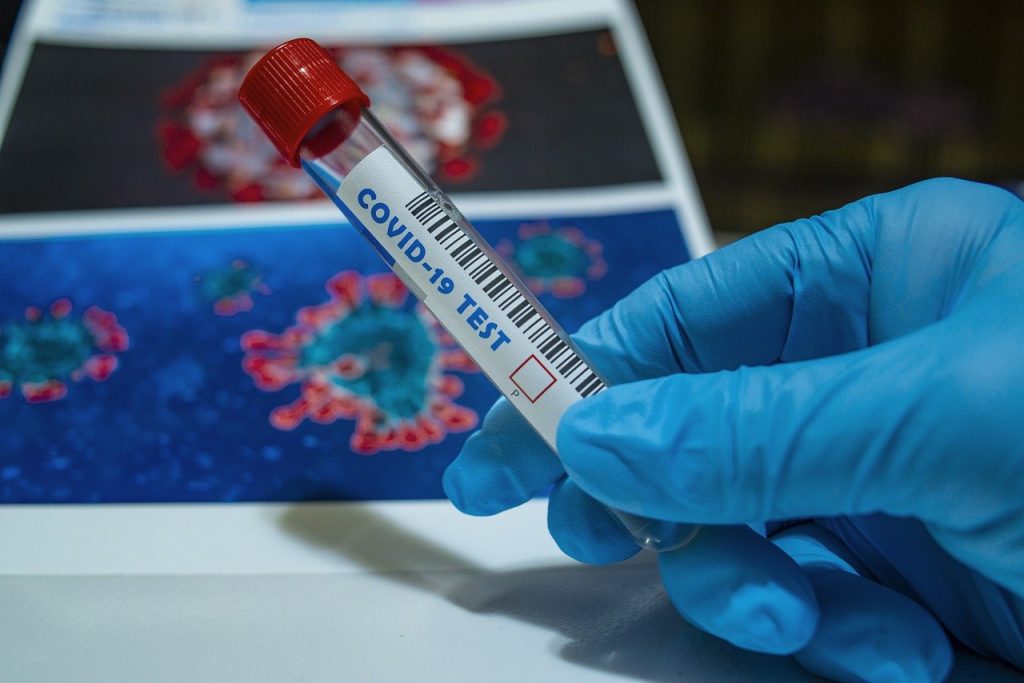The outbreak of a ‘pneumonia of unknown cause’ was declared as a Public Health Emergency of International Concern on 30 January 2020. Following that, on 11 February 2020, the World Health Organization announced a name for the new coronavirus disease: COVID-19 (World Health Organization, 2020).
In general, the common symptoms of COVID-19 experienced by the infected patients include fever, body and muscle ache, stuffy or runny nose, dry cough, fatigue, chills, headache, sore throat, loss of appetite, and loss of smell (World Health Organization, 2020). However, in some people, COVID-19 causes more severe symptoms like high fever, severe cough, and shortness of breath, which often indicates pneumonia (Harvard Health Publishing, 2020; HealthLink BC, 2020). In those people with mild levels of COVID-19 symptoms, in a few days, sudden worsening of symptoms has been reported. In addition, people infected with COVID-19 may also experience gastrointestinal symptoms like diarrhea, nausea and vomiting a few days after the onset of the above-mentioned symptoms (Gandhi, Yokoe and Havlir, 2020). Even though atypical covid symptoms exist.
While the above list of symptoms has been extensively shared as a part of the public service announcements, the atypical covid symptoms have not been widely narrated. Studies have shown that a sizeable population maybe positive to the testing and yet maybe asymptomatic. Also, asymptomatic patients play a major role in transmitting the coronavirus. Hence, health agencies, media, and governments, by large, need to generate an awareness about the atypical covid symptoms and simultaneously burst myths about these symptoms.
As per Ontario, Canada’s COVID-19 Provincial Testing Guidance, the recognized atypical covid symptoms were unexplained fatigue/malaise, delirium, unexplained or increase number of falls, acute functional decline, exacerbation of chronic conditions, chills, headache, croup and conjunctivitis. Additionally, the update stated that the atypical signs of COVID-19 included unexplained tachycardia (example: age specific tachycardia for children), decrease in blood pressure, unexplained hypoxia, lethargy, and difficulty in feeding infants (Ontario Ministry of Health, 2020). In a study conducted in China, atypical extrapulmonary symptoms, especially those with digestive symptoms at the beginning of the outbreak were considered to have received less attention by the public and maybe have been the cause in transmission inside the family of community (Pan et al., 2020).
In Taiwan, patients exhibiting atypical covid symptoms or whose tests remain inconclusive are directed to a quarantine ward via a designated route that avoids contact with the clean zone to maintain safety of healthcare workers. These patients are admitted in the wards through the extent of their incubation period. These steps are taken mainly to mitigate the uncertain impact of atypical covid symptoms on both the patients and healthcare workers (Schwartz, King, Chwan-Chuen and Yen, 2019). Furthermore, a study reported that they detected SARS-CoV-2 in stool samples from patients with abdominal symptoms and interestingly, these patients tested negative twice by throat swab specimens but tested positive using the rectal swab (Qian et al., 2020; Zhang et al., 2020). Hence, those patients who suffer from symptoms of the digestive tract like diarrhea, need to be tested for COVID-19 using both throat and rectal swabs. This information will benefit diagnosticians too, if made aware of atypical standards of testing.
Owing to the complexity of the COVID-19 pneumonia pathogenesis, in recent Korean and Chinese case reports, the initial symptom and imaging features of COVID-19 pneumonia could also be atypical. Notably, COVID-19 pneumonia may present with atypical manifestations, such as hemoptysis and focal Ground-glass opacification/opacity with non-peripheral distribution, on initial CT scans (Fang et al., 2020; Shi et al., 2020). Hence, knowing atypical covid symptoms would aid radiologists and clinicians to be aware of the early atypical symptom and imaging features of the disease and contribute to the prevention of infected patients being missed.
As previously mentioned, when people are made aware of the validated list of atypical covid symptoms, they will consider testing of COVID-19 (which is of more importance in countries that rely on the method of public volunteering/self-approaching for testing), quarantining themselves if tested positive, obtain the necessary treatment and take precautions. This could help with timely diagnosis and treatment for patients while helping the government build strategies (to quarantine, evaluate the utilization of the healthcare system and estimates for reopening strategies) based on accurate incidence rates.
Need to consult a coronavirus expert? Work with epidemiologists, virologists and COVID-19 experts on Kolabtree.
References:
- Fang, Y. et al. (2020) ‘Sensitivity of Chest CT for COVID-19: Comparison to RT-PCR’, Radiology, p. 200432.
- Gandhi, M., Yokoe, D. S. and Havlir, D. V. (2020) ‘Asymptomatic Transmission, the Achilles’ Heel of Current Strategies to Control Covid-19’, New England Journal of Medicine, pp. 1–3. doi: 10.1056/nejme2009758.
- Harvard Health Publishing (2020) COVID-19 basics.
- HealthLink BC (2020) Symptoms of COVID-19. Available at: https://www.healthlinkbc.ca/symptoms-covid-19.
- Ontario Ministry of Health (2020) COVID-19 Provincial Testing Guidance Update.
- Organization, W. H. (2020) Coronavirus (COVID-19) events as they happen.
- Pan, L. et al. (2020) ‘Clinical Characteristics of COVID-19 Patients With Digestive Symptoms in Hubei, China’, The American Journal of Gastroenterology, 115(May), p. 1. doi: 10.14309/ajg.0000000000000620.
- Qian, G. Q. et al. (2020) ‘Epidemiologic and Clinical Characteristics of 91 Hospitalized Patients with COVID-19 in Zhejiang, China: A retrospective, multi-centre case series’, QJM : monthly journal of the Association of Physicians, (59). doi: 10.1093/qjmed/hcaa089.
- Schwartz, J., King, Chwan-Chuen, A. and Yen, M.-Y. (2019) ‘Protecting Health Care Workers during the COVID-19 Coronavirus Outbreak –Lessons from Taiwan’s SARS response Jonathan’, Clinical Infectious Diseases, ciaa255(23), pp. 301–316. doi: 10.15797/concom.2019..23.009.
- Shi, F. et al. (2020) ‘2019 Novel Coronavirus (COVID-19) Pneumonia with Hemoptysis as the Initial Symptom: CT and Clinical Features’, Korean journal of radiology, 21(5), pp. 537–540. doi: 10.3348/kjr.2020.0181.
- Zhang, H. et al. (2020) ‘The digestive system is a potential route of 2019-nCov infection: a bioinformatics analysis based on single-cell transcriptomes’, bioRxiv, p. 2020.01.30.927806. doi: 10.1101/2020.01.30.927806.
